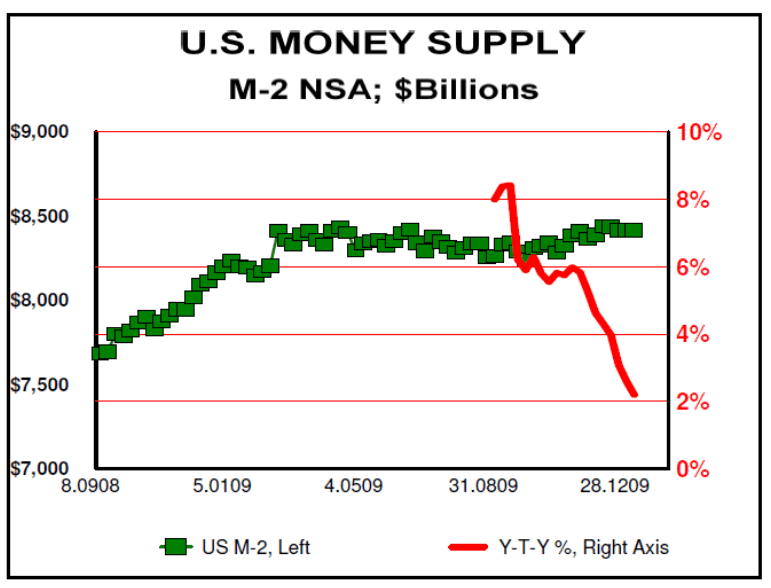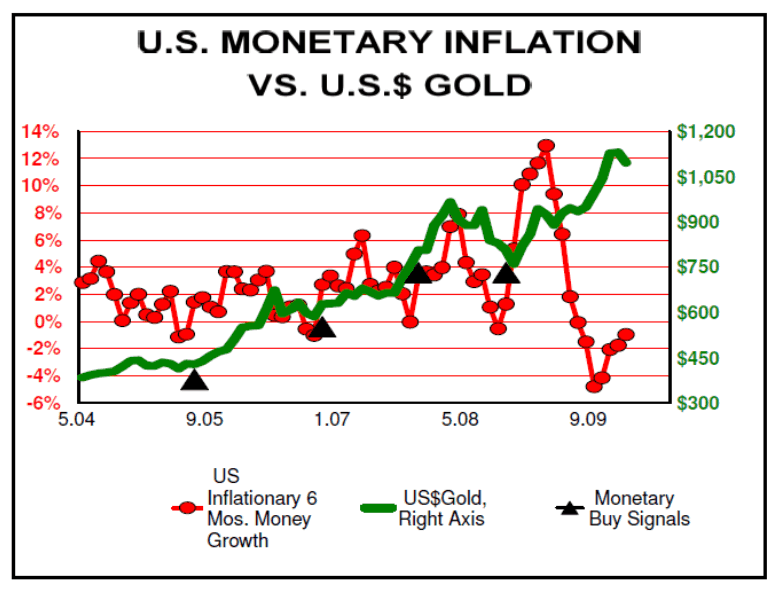Fed Statements Clear Any Doubts of Gold Hitting $1,700
Commodities / Gold and Silver 2010 Jan 05, 2010 - 03:10 AM GMTBy: Ned_W_Schmidt
 We must applaud the leadership of the Federal Reserve. That group is certainly attempting to be more efficient. Why wait till later in the year? Do it early, and get it done. Make a speech filled with what may go down as the height of economic drivel on the 2nd day of January, rather than later in the year. Maybe Chairman Bernanke thought if he spouted economic nonsense early in the year, most would forget his blundering leadership by year end.
We must applaud the leadership of the Federal Reserve. That group is certainly attempting to be more efficient. Why wait till later in the year? Do it early, and get it done. Make a speech filled with what may go down as the height of economic drivel on the 2nd day of January, rather than later in the year. Maybe Chairman Bernanke thought if he spouted economic nonsense early in the year, most would forget his blundering leadership by year end.
Apparently, the Federal Reserve does not believe that the low interest rate policy caused the housing bubble. Previously it informed us that low interest rate policies did not cause the technology stock market bubble. We are now to understand that low interest rates do not inflate the prices of any assets. On some days this author does have doubts about $Gold exceeding $1,700. Then, the Chairman of the Federal Reserve makes a speech such as he did. All doubts flee, and belief in Gold as an investment savior is renewed. One has to wonder after such a speech if no greater waste of money exists than that spent on an education in economics.

While Bernanke has renewed our faith in the long-term merits of Gold, we still have to live in the short-term. For that reason, our first graph this week is of the U.S. money supply, M-2. We use the not seasonally adjusted version. A few years ago someone tried to pay us with a check on their seasonally adjusted bank account. It didn't work. That aside, the U.S. money supply continues to be essentially stagnant. It did indeed burst upward nicely in 2008 as the Federal Reserve went into panic mode, flooding the U.S. financial system with liquidity. However, since earlier last year the U.S. money supply has not grown.
The red line in that chart, using the right axis, is of the year-to-year percentage change in the quantity of U.S. money in existence. As can be observed in that chart, U.S. money supply growth is a little over 2%. Barring some dramatic upward lift in the level of U.S. bank lending, that growth rate will continue to decline.
Now, what can be said about 2% growth in the money supply? The answer is that not much can be said of it. 2% money supply growth simply is both boring and non inflationary. It is a rate of expansion in the U.S. money supply that provides no justification for the value of $Gold to rise. It certainly is a rate of money creation that should have no material impact on the value of the U.S. dollar on foreign currency markets.
Should the Federal Reserve aggressively monetize the Obama Deficit in the coming year, this situation might change. Given that the Federal Reserve believes that low interest rates have no negative consequences, that seems increasingly likely. Monetization of a deficit of the size to be created by the Obama Regime could cause the U.S. money supply to grow more dramatically. Given the growing recognition that Obama might not have a second term, some desperate spending measures might be pursued. Until such time though, little reason exists for the value of the U.S. dollar to change much or $Gold to advance materially in price in the near term.

So as not to be branded a heretic, some signs of encouragement on the future price of $Gold can be found. In our second chart, above, is plotted the monthly average of the price of $Gold using a green line and the right axis. The red line, using the left axis, is the inflationary component of U.S. money supply growth.
As can be observed in that chart, the inflationary component of U.S. money supply growth is negative. In short, that situation means that U.S. money supply growth is depressing prices rather than inflating them. Further, as can be observed in that chart, the price of $Gold is normally rather weak when the red line is declining or negative. The current divergence from that historical experience is due to a mini mania in Gold.
A positive environment for the price of $Gold occurs when the red line turns positive from a negative reading. Such a development means that the U.S. money supply growth rate has gone from price depressing to price inflating. Those times when that monetary measure has turned positive have been used to create buy signals in that graph.
At the present time U.S. money supply growth does not suggest that the price of $Gold should be advancing. The experience of $Gold in the fading days of 2009 was a mini mania, that seems to be continuing in the opening days of 2010. Many of those that had ignored Gold as an investment suddenly got reborn as mini Gold bugs. Like those that have given up smoking, the converted Gold bugs became zealous in their passion for owning Gold.
With the new year arriving, thinking may become more sober. A testing of the new floor for Gold, the old ceiling, in the US$970 range continues to seem possible in the near future. Should that happen investors should note the positive signs in our last graph, and add to positions. In that last graph note that the U.S. money supply growth rate seems to have found a bottom. Should it turn positive, $Gold should again gain strength. With that scenario in mind, the second half of 2010 may be far more rewarding for Gold investors than the first half.
By Ned W Schmidt CFA, CEBS
Copyright © 2009 Ned W. Schmidt - All Rights Reserved
GOLD THOUGHTS come from Ned W. Schmidt,CFA,CEBS, publisher of The Value View Gold Report , monthly, and Trading Thoughts , weekly. To receive copies of recent reports, go to http://home.att.net/~nwschmidt/Order_Gold_GETVVGR.html
Ned W Schmidt Archive |
© 2005-2022 http://www.MarketOracle.co.uk - The Market Oracle is a FREE Daily Financial Markets Analysis & Forecasting online publication.



